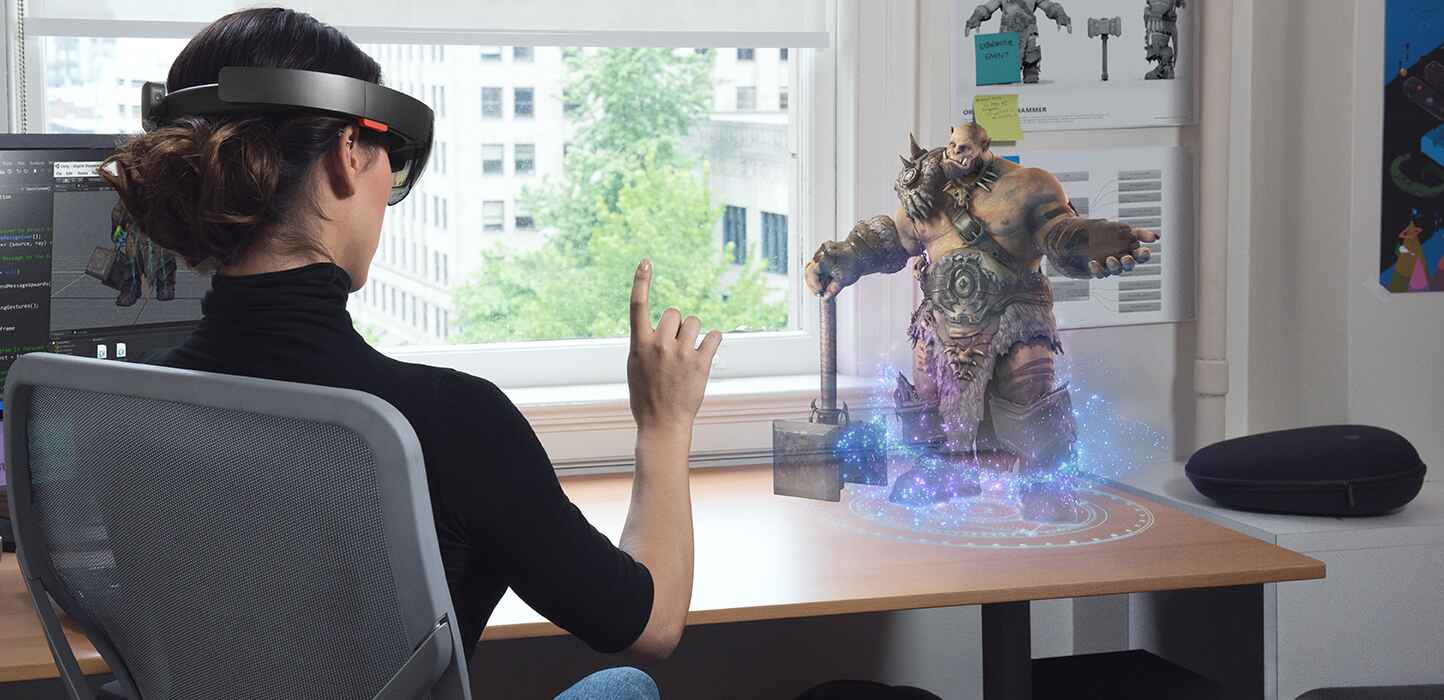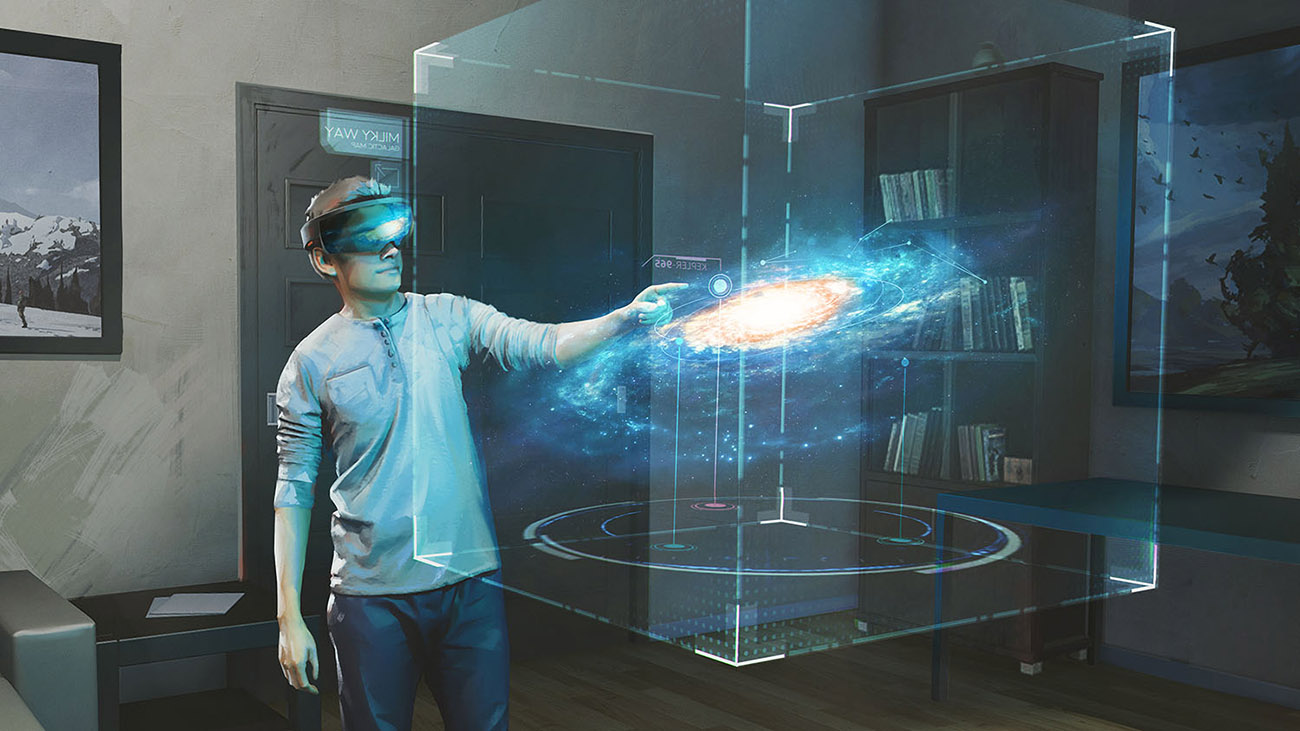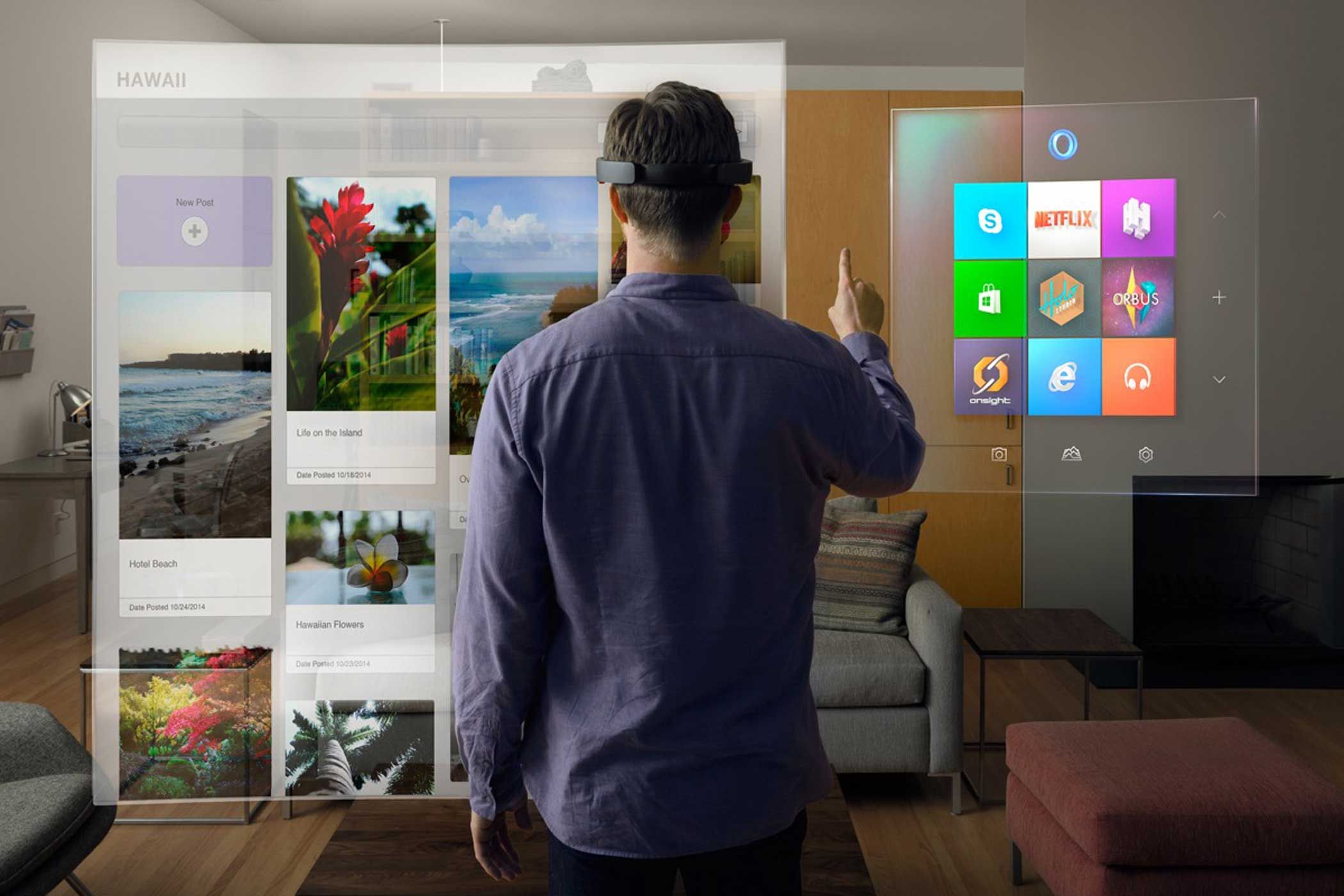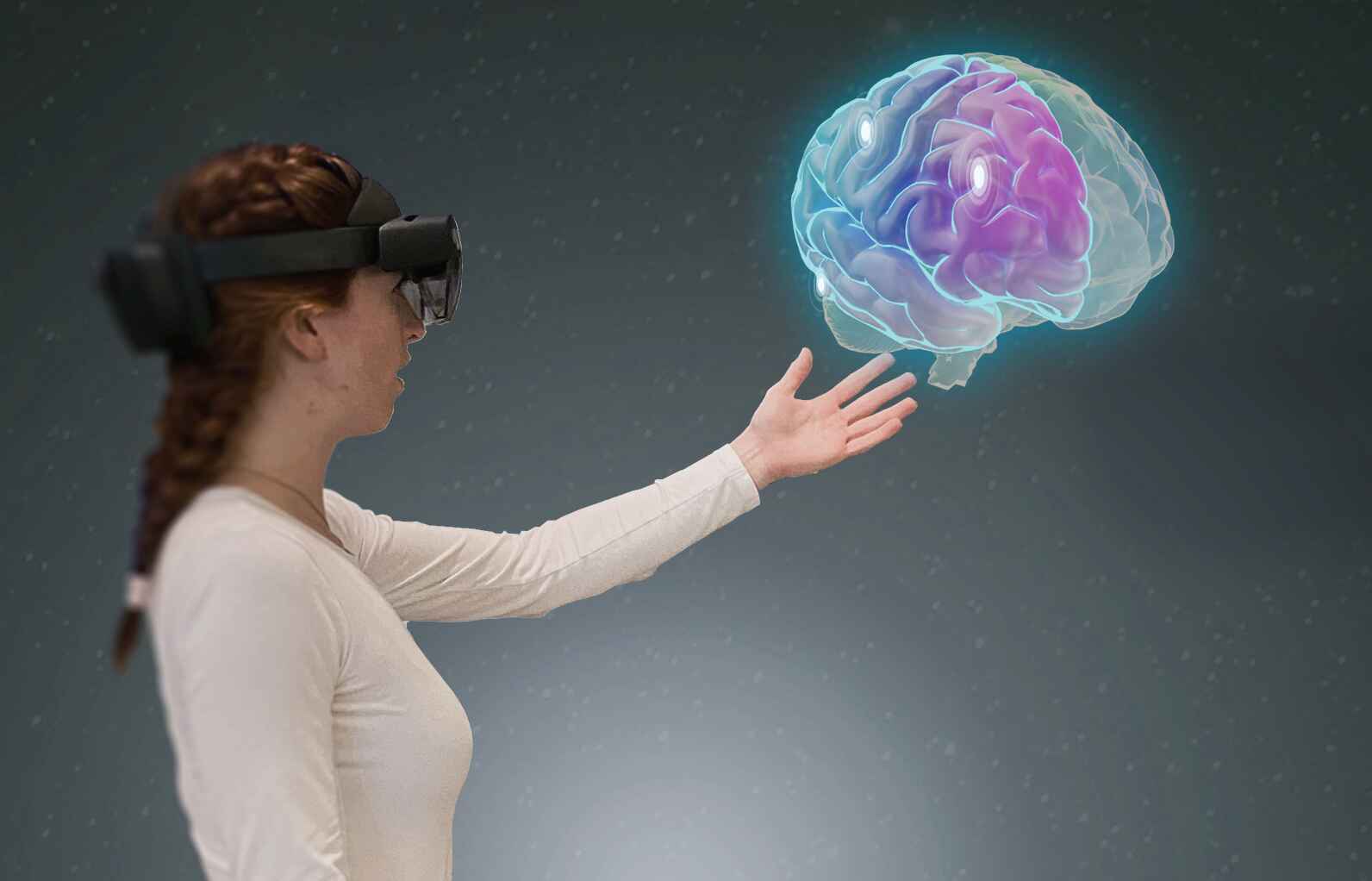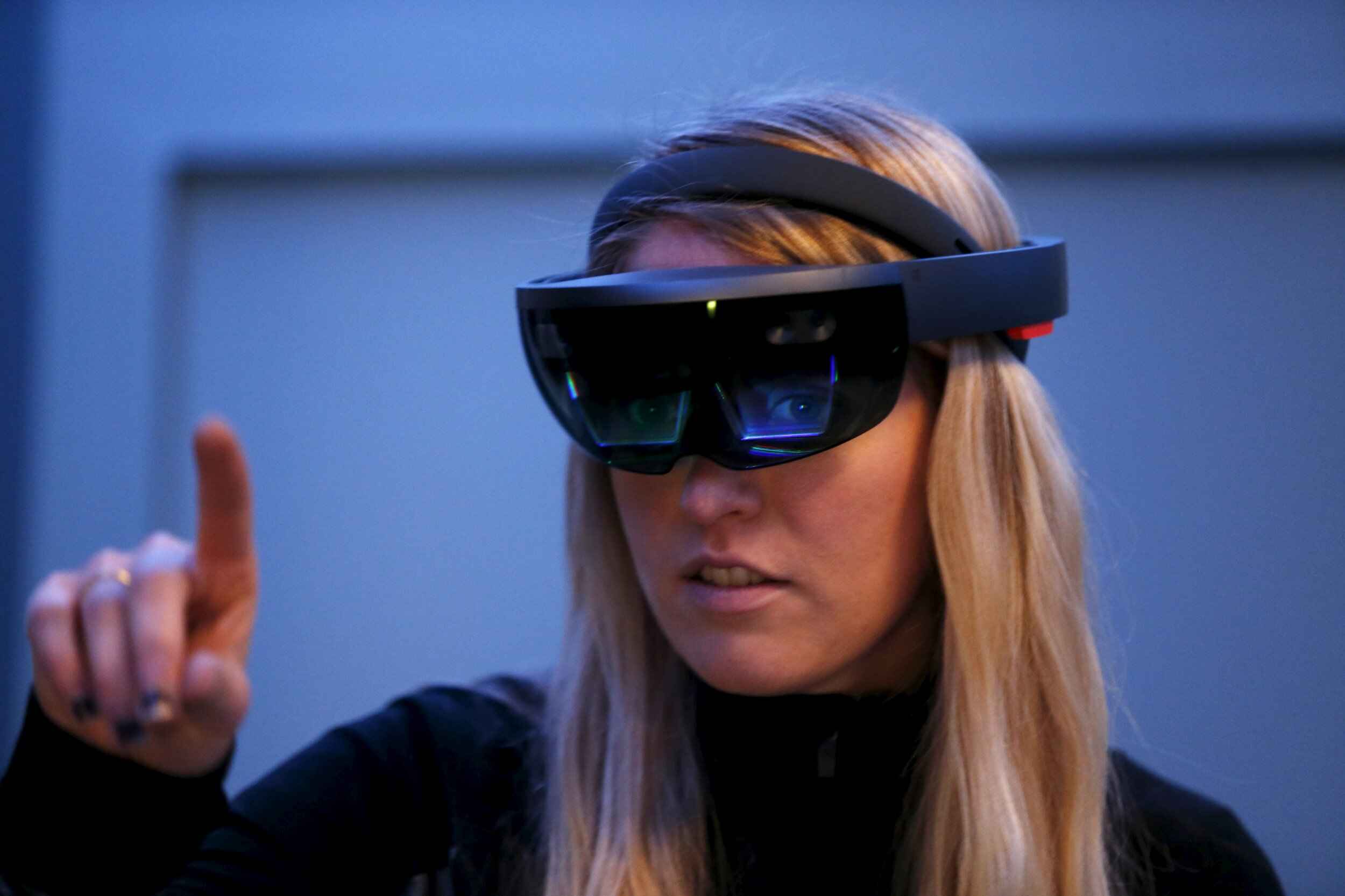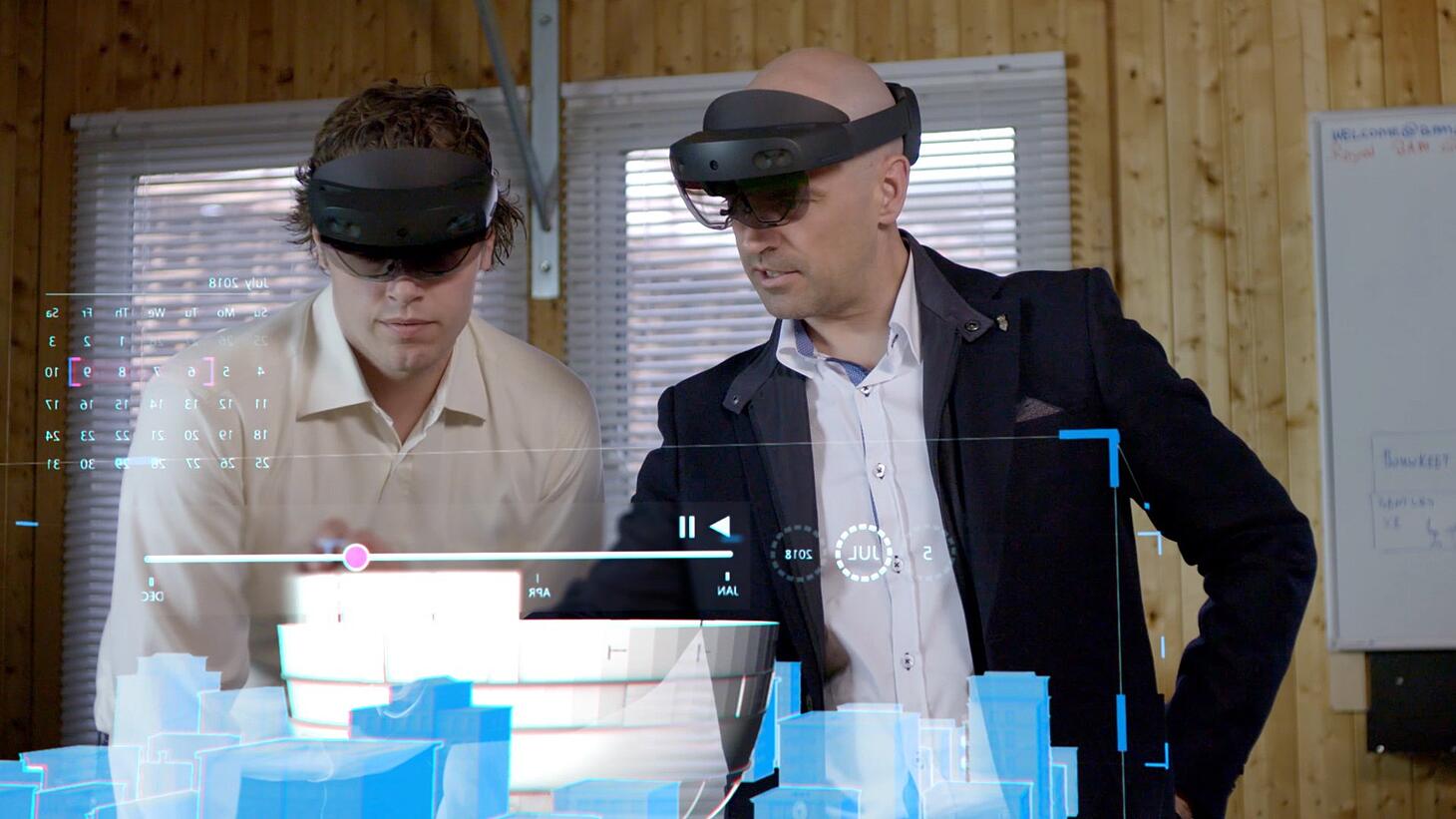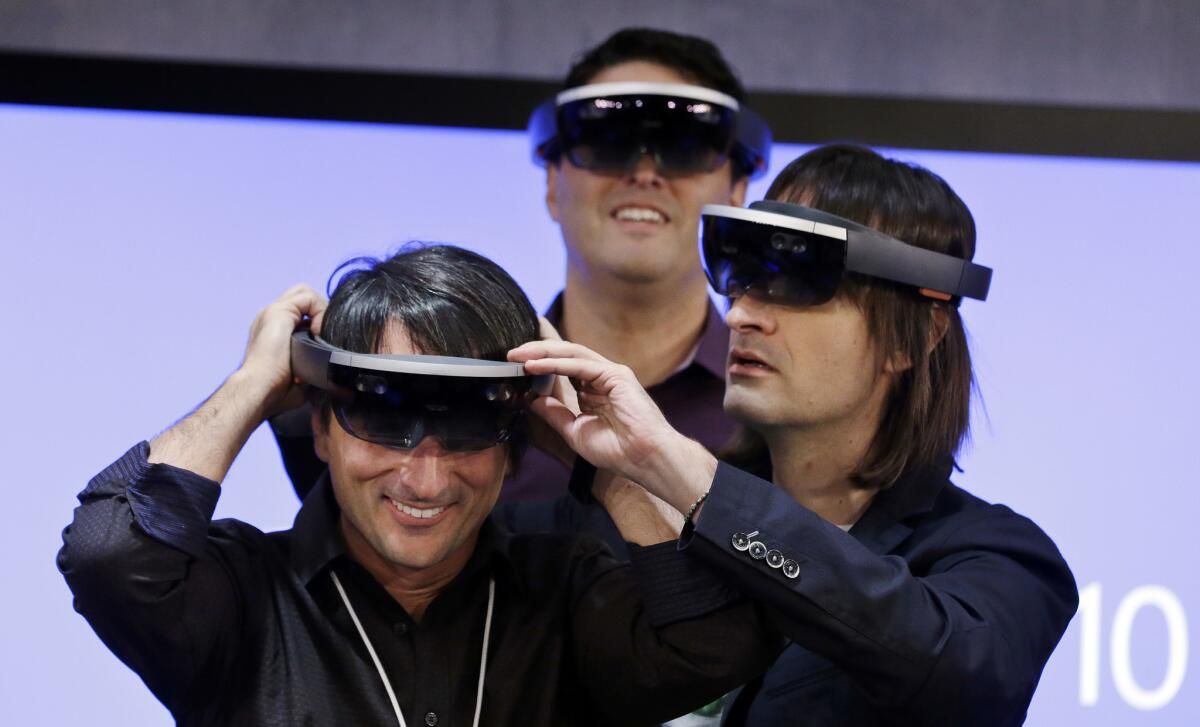Introduction
Microsoft HoloLens is a groundbreaking augmented reality (AR) technology that has revolutionized the way we interact with digital content in the physical world. Combining cutting-edge hardware and innovative software, HoloLens offers users a unique and immersive experience that blends virtual elements seamlessly with real-world surroundings.
Unlike virtual reality (VR) devices that transport users to entirely virtual environments, HoloLens overlays virtual holographic objects onto the user’s physical environment. This allows users to see and interact with digital content as if it were part of the real world. Whether it’s gaming, design, education, or enterprise applications, HoloLens opens up a new dimension of possibilities.
One of the key differentiators of HoloLens is its ability to provide a mixed reality experience, where users can freely move around and interact with holograms. This spatial tracking capability allows for a more immersive and intuitive experience, making HoloLens a powerful tool for both professional and personal use.
Since its initial release in 2016, Microsoft has continued to refine and improve HoloLens, introducing updates and new features that enhance its capabilities. The latest iteration, HoloLens 2, builds upon the success of the first version, introducing advancements in comfort, field of view, and interaction methods.
In this article, we will take a closer look at the technology behind Microsoft HoloLens, its features and functionalities, and the wide range of applications it has in various industries. We will also explore the pricing and availability of HoloLens and discuss why it is considered a pioneering device in the world of augmented reality.
What Is Microsoft HoloLens?
Microsoft HoloLens is a cutting-edge augmented reality (AR) device developed and manufactured by Microsoft. It is designed to offer users a unique and interactive way to interact with digital content in their real-world environment.
Unlike virtual reality (VR) headsets, which immerse users in entirely virtual environments, HoloLens allows users to see virtual holographic objects seamlessly integrated into their surroundings. This combination of virtual and real elements creates a mixed reality experience that can be truly transformative.
HoloLens is equipped with advanced sensors, cameras, and a custom-built holographic processing unit (HPU), which enable it to track the user’s movements in real-time and map the environment around them. This allows for precise placement and interaction with the virtual content, providing a highly immersive and interactive experience.
The device itself is a self-contained unit that does not require any external wires or connections, giving users the freedom to move around and explore their mixed reality environment without any restrictions. It features a comfortable and adjustable headband, along with a visor-like display that allows users to see both the virtual and real-world simultaneously.
Interacting with holographic content on HoloLens is intuitive and natural. Users can use air tapping gestures, voice commands, or even hand movements to manipulate and control the virtual objects. This makes it a versatile tool for a wide range of applications, including gaming, design and modeling, education and training, medical simulations, and more.
Microsoft has also developed a robust software platform called Windows Mixed Reality, which provides developers with the tools and resources they need to create and deploy unique AR experiences for HoloLens. This open ecosystem encourages innovation and allows for a growing library of diverse applications and experiences.
Overall, Microsoft HoloLens is at the forefront of the augmented reality revolution. Its advanced technology, seamless integration of virtual and real-world elements, and intuitive controls make it a powerful device with limitless potential. Whether used for entertainment, productivity, or professional applications, HoloLens is shaping the future of how we interact with digital content.
How Does Microsoft HoloLens Work?
Microsoft HoloLens is a remarkable piece of technology that combines advanced hardware and software to deliver an immersive augmented reality (AR) experience. At its core, HoloLens utilizes a combination of sensors, cameras, and a custom-built holographic processing unit (HPU) to enable users to interact with virtual content in their real-world environment.
To begin, HoloLens uses a range of sensors, including inertial measurement units (IMUs), ambient light sensors, and depth cameras, to gather real-time data about the user’s surroundings. This allows the device to create a 3D map of the physical space, enabling it to accurately position and track virtual objects in relation to the user’s real-world environment.
The HPU plays a pivotal role in processing this sensory data and generating the mixed reality experience. With its powerful computing capabilities, it analyzes the environment and determines the precise placement and alignment of holograms within the user’s field of view. This ensures that the virtual content seamlessly integrates with the real world, creating a convincing mixed reality experience.
HoloLens also incorporates a high-definition see-through display system that delivers the holographic content to the user’s eyes. This display system allows users to see both the virtual and real-world simultaneously, blending the two seamlessly. The display is adjustable, enabling users to find the most comfortable viewing position.
Another important component of HoloLens is its spatial sound technology. The device includes built-in speakers that deliver immersive 3D audio, helping to enhance the overall experience. Spatial sound ensures that virtual audio objects are accurately positioned in relation to the user’s physical environment, adding an extra layer of realism to the augmented reality experience.
Interacting with holograms on HoloLens is intuitive and natural. The device incorporates various input methods, including gaze tracking, voice commands, and hand gestures. Gaze tracking allows users to select and interact with holograms simply by looking at them, while voice commands enable hands-free control over the device and the virtual content. Hand gestures, such as air tapping or using the palm to manipulate objects, provide precise and tactile control over the holographic objects.
Through a combination of accurate spatial tracking, immersive visuals, spatial sound, and intuitive interaction methods, HoloLens brings virtual content to life in the real world. The device’s advanced hardware and software work together seamlessly to create a mixed reality experience that is both captivating and highly interactive.
As technology continues to evolve, Microsoft is constantly refining and improving HoloLens to ensure that users have access to the most advanced augmented reality experiences. This ongoing commitment to innovation and development signifies the significance and potential of Microsoft HoloLens in shaping the future of augmented reality.
Features of Microsoft HoloLens
Microsoft HoloLens offers a range of impressive features that make it a groundbreaking augmented reality (AR) device. From its advanced hardware to its innovative software, HoloLens provides users with an unparalleled mixed reality experience. Let’s explore some of its key features:
1. Spatial Mapping and Tracking: HoloLens uses a combination of sensors to create a detailed 3D map of the user’s environment. This allows for precise spatial tracking, ensuring that holographic content is accurately placed and anchored to the real-world environment. The device can detect surfaces, walls, and objects, adjusting the holograms accordingly.
2. High-Resolution Display: The see-through display on the HoloLens provides a crisp and clear visual experience. It offers a high-definition, stereoscopic view that seamlessly blends virtual objects with the real world. The adjustable display allows users to find the most comfortable viewing position.
3. Holographic Sound: HoloLens incorporates spatial sound technology that adds an extra layer of immersion to the mixed reality experience. The built-in speakers deliver 3D audio, ensuring that virtual sound objects are accurately positioned in relation to the user’s physical environment.
4. Natural User Interface: Interacting with holograms on HoloLens is intuitive and natural. Users can use gaze tracking to select and manipulate virtual objects simply by looking at them. Voice commands allow for hands-free control, and hand gestures enable precise and tactile interaction, such as air tapping or grabbing and moving objects using hand movements.
5. Wide Field of View: The field of view on the HoloLens has significantly improved with the latest version. HoloLens 2 offers an expanded field of view, allowing users to see more virtual content in their environment. This enhances the immersion and realism of the mixed reality experience.
6. Comfortable Design: HoloLens is designed to be comfortable even during long periods of use. It features a lightweight and adjustable headband that distributes the weight evenly, reducing strain on the user’s head and neck. The device is also adjustable to fit various head sizes, making it accessible to a wide range of users.
7. Robust Development Platform: Microsoft provides developers with the necessary tools and resources through the Windows Mixed Reality platform to create compelling augmented reality experiences for HoloLens. This open ecosystem encourages innovation and allows for the development of a diverse range of applications.
8. Enterprise-Ready: HoloLens is not limited to entertainment and gaming; it has significant applications in various industries. It has been widely adopted in fields such as architecture, engineering, medical training, and manufacturing, where it is used for design visualization, virtual prototyping, remote collaboration, and training simulations.
These features and functionalities make Microsoft HoloLens a versatile and powerful device that has captured the attention of both developers and users. The combination of precise spatial tracking, high-resolution visuals, intuitive user interface, and enterprise-focused capabilities positions HoloLens at the forefront of augmented reality technology.
Applications of Microsoft HoloLens
Microsoft HoloLens has a wide range of applications across various industries, transforming how professionals work and enhancing the way we learn and experience content. Let’s explore some of the notable applications of HoloLens:
1. Design and Architecture: HoloLens is revolutionizing the field of design and architecture by allowing professionals to create, visualize, and modify virtual 3D models of buildings and products. The ability to overlay virtual objects onto the physical environment enables designers to gain a better understanding of spatial relationships and make informed design decisions.
2. Medical Training and Education: HoloLens is being used in medical training and education to simulate complex medical scenarios. Students can virtually dissect organs, practice surgeries, and interact with holographic anatomy models, providing a safe and immersive learning environment. This technology also enables remote collaboration between medical professionals for consultation and diagnosis.
3. Manufacturing and Assembly: HoloLens is improving efficiency and productivity in manufacturing and assembly processes. Workers can follow step-by-step holographic instructions overlaid on machinery or equipment, reducing errors and increasing accuracy. The device can also detect potential issues or malfunctions and provide real-time guidance for troubleshooting.
4. Education and Training: HoloLens is transforming the way we learn by bringing virtual content into the classroom. Students can experience historical events, explore scientific concepts, and interact with virtual objects, making learning more engaging and interactive. HoloLens also opens up opportunities for remote learning and virtual field trips.
5. Remote Collaboration: HoloLens enables remote collaboration by allowing users to share a mixed reality experience, regardless of their physical location. This is valuable for teams working on complex projects, as they can view and interact with the same holographic content, improving communication and decision-making processes.
6. Gaming and Entertainment: HoloLens offers unique gaming experiences by blending virtual objects with the user’s physical environment. Users can explore virtual worlds, interact with holographic characters, and participate in mixed reality gaming experiences that bridge the gap between physical and virtual realities.
7. Retail and Marketing: HoloLens has promising applications in retail and marketing, allowing customers to visualize and interact with virtual products before making a purchase. Virtual showrooms, holographic advertisements, and personalized shopping experiences can enhance customer engagement and improve the overall retail experience.
8. Collaboration and Communication: HoloLens facilitates improved collaboration and communication in various industries. From architects collaborating with clients to engineers collaborating on complex projects, virtual meetings and shared holographic experiences enhance teamwork and streamline decision-making processes.
These are just a few examples of the applications of Microsoft HoloLens. As the technology evolves and more developers continue to leverage its capabilities, we can expect to see HoloLens being applied in even more innovative and impactful ways across a wide range of industries.
Pricing and Availability
Microsoft HoloLens is available for purchase in select countries, primarily targeting developers and enterprise customers. The device has seen significant improvements with the release of HoloLens 2. Let’s take a look at the pricing and availability of HoloLens:
HoloLens 2 is currently priced at $3,500 USD for the standard configuration. This includes the device itself, along with a carrying case, a charger, and a microfiber cloth for cleaning. Microsoft also offers an option for additional accessories and support packages, which can be customized based on specific user requirements.
In addition to individual purchases, Microsoft offers HoloLens for business customers through the Mixed Reality Commercial Suite, which is designed to meet the needs of organizations. This suite includes commercial use rights, enterprise-level management, and security features to facilitate deployment and management at scale.
Currently, HoloLens 2 is available in several countries, including the United States, Canada, Japan, Germany, France, United Kingdom, Australia, and New Zealand. Microsoft has plans to expand availability to additional markets in the future, as they continue to develop and advance the technology.
To ensure a smooth and optimized experience, Microsoft also provides developers with a comprehensive set of tools and resources through the Windows Mixed Reality platform. This allows developers to create, test, and deploy applications specifically tailored for the HoloLens platform.
Microsoft HoloLens represents a significant investment, primarily focused on developers and enterprise customers due to its advanced capabilities and applications. However, as the technology continues to evolve and become more accessible, it is likely that we will see a broader consumer-focused release in the future.
It’s worth noting that the field of augmented reality is rapidly evolving, and with increasing competition, we can expect to see advancements in both the technology and pricing. As HoloLens continues to establish itself as a leader in the augmented reality space, it is likely that we will see more affordable and consumer-oriented options in the years to come.
Conclusion
Microsoft HoloLens represents a significant leap forward in the realm of augmented reality (AR) technology. With its advanced hardware, precise spatial tracking, and intuitive user interface, HoloLens offers a truly immersive mixed reality experience.
From design and architecture to medical training and education, HoloLens has numerous applications across various industries. It is transforming how professionals work, learn, collaborate and create. The device provides a unique way to interact with digital content in the real world, opening up new possibilities for innovation and creativity.
The features of HoloLens, such as spatial mapping and tracking, high-resolution display, and holographic sound, contribute to its seamless integration of virtual and physical environments. The comfort and adjustability of the device make it suitable for extended use, further enhancing the user experience.
Although currently primarily targeted towards developers and enterprise customers due to its price and advanced capabilities, the potential of HoloLens is vast. It is driving the future of augmented reality, offering a glimpse into what is possible when virtual and physical realities merge.
As the technology continues to evolve, we can anticipate advancements in both the device itself and its accessibility. While HoloLens remains at the forefront of AR technology, we may see more affordable and consumer-focused options in the future, expanding its impact on a wider audience.
Microsoft’s commitment to fostering a robust development platform further underscores the potential of HoloLens. Developers are empowered to create innovative AR experiences, shaping the future of mixed reality applications across industries.
In conclusion, Microsoft HoloLens has redefined the way we interact with digital content in the physical world. Its remarkable features, applications, and the ongoing advancements in the field of augmented reality highlight the significance of HoloLens in driving technological innovation and shaping the future of immersive experiences.







